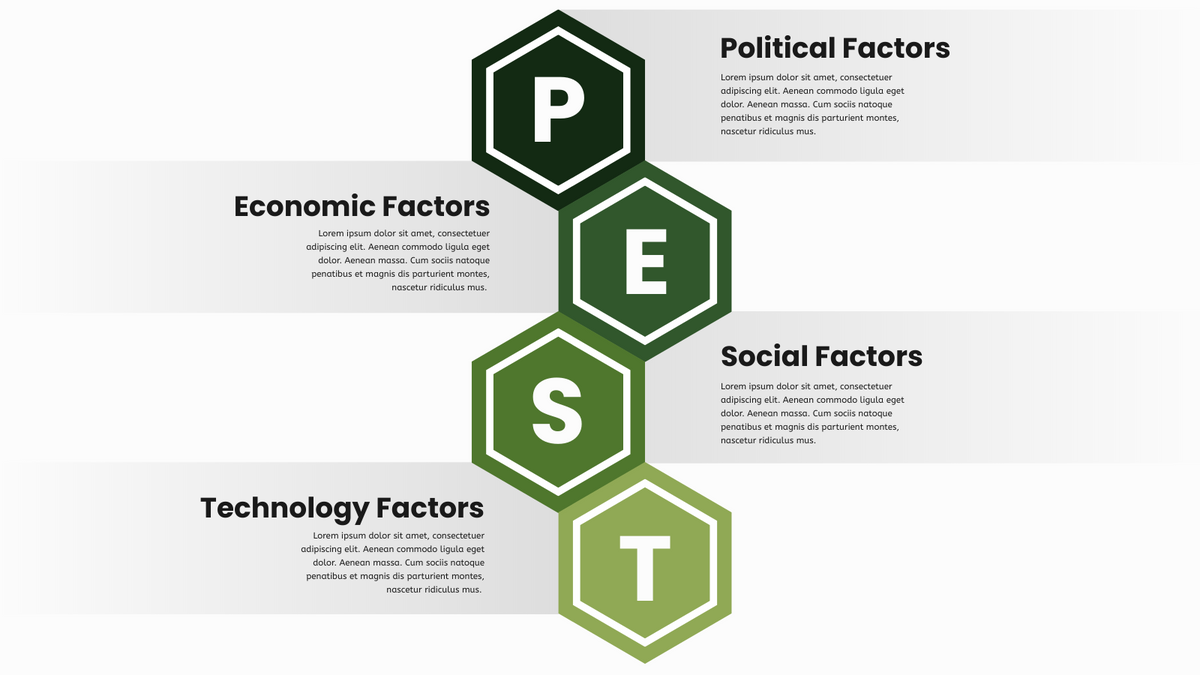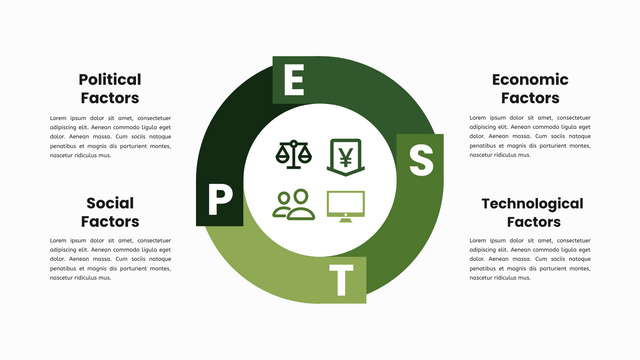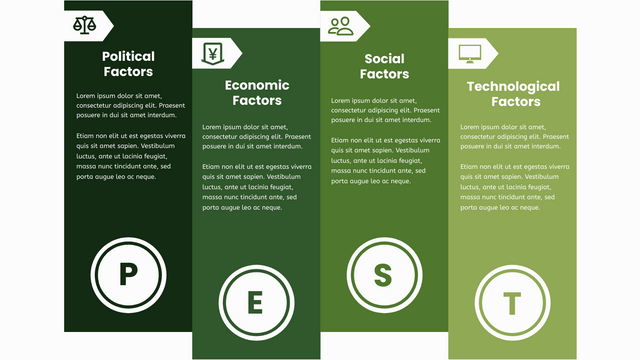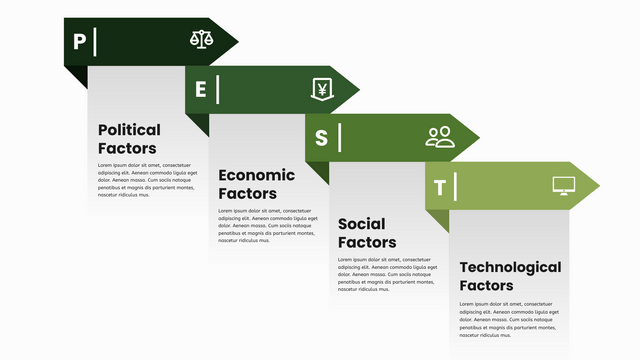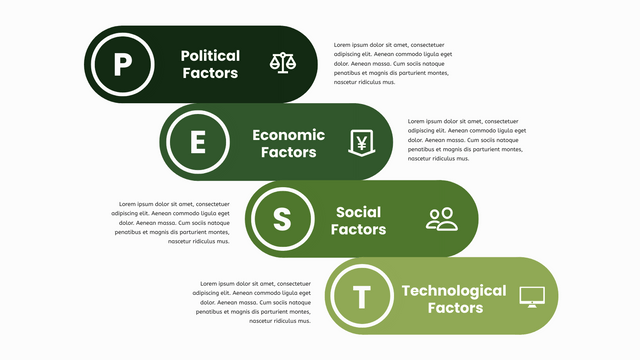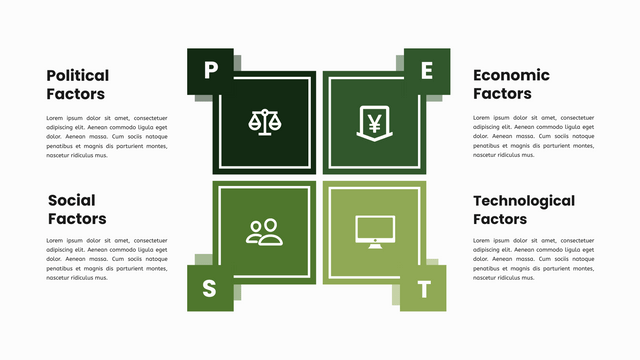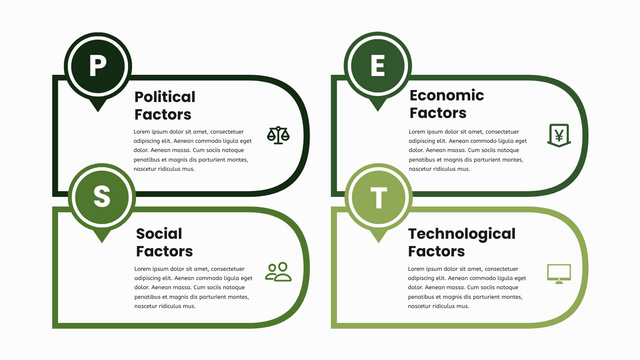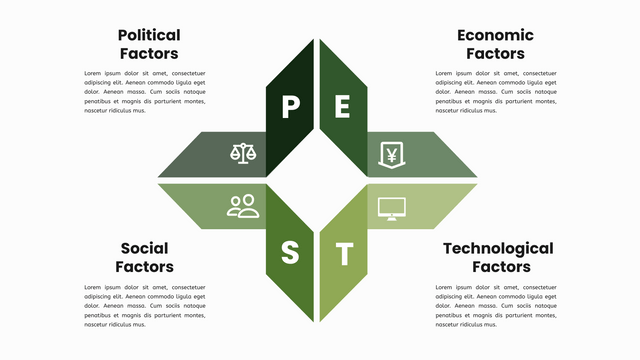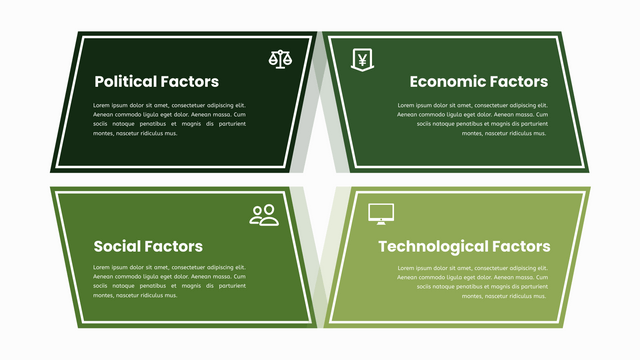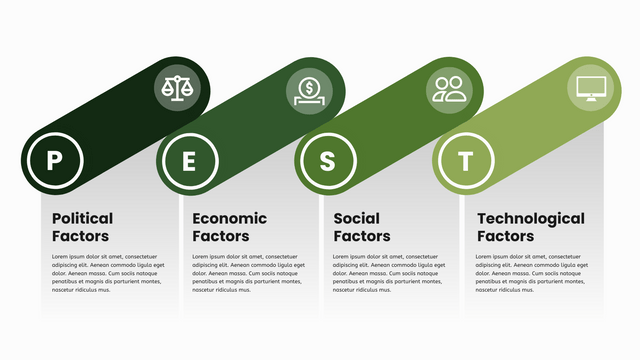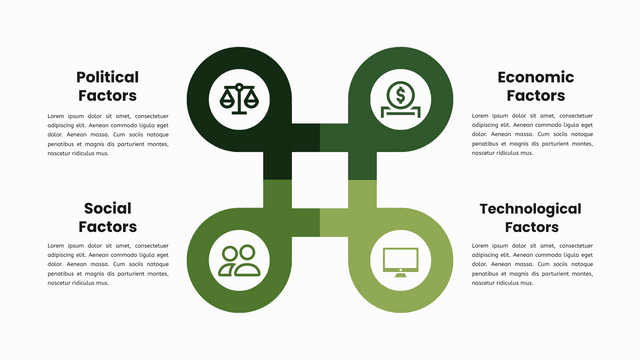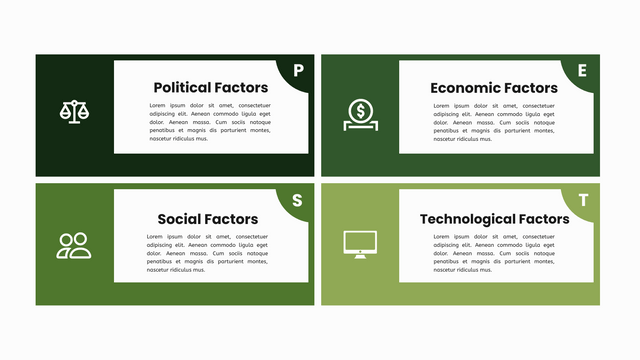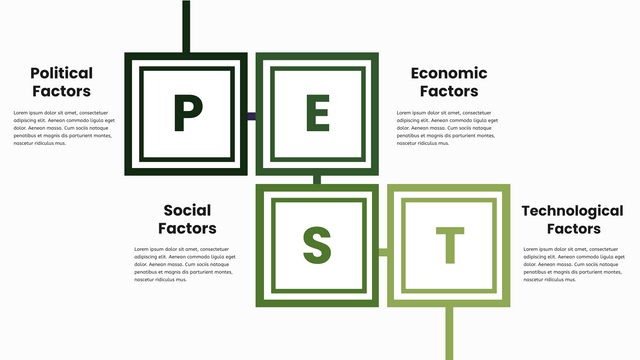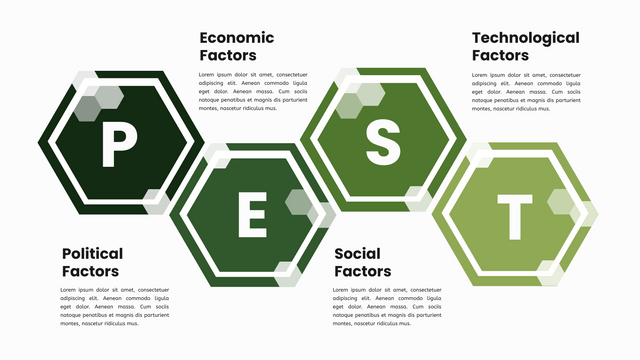PEST analysis can help companies review the macro business environment and evaluate the main external factors that affect the organization's operations in order to become more competitive in the market. The PEST model can help managers identify macro-external changes that may bring opportunities or threats to the enterprise.
PEST respectively refers to the 4 major forces that affect business operations:
Political: Policies that have a special impact on the company, such as tax or labor law. The overall political climate, social system, government policies, and laws of a country may all have an impact on enterprises.
Economic factors (Economic): factors such as interest rates and exchange rates, the country’s economic growth, economic recession, consumption levels and preferences, balance of supply and demand, employment levels, inflation and other factors.
Social factors (Social): a country's education level, population and age distribution, customs, national culture, life trends, values, etc.
Technological factors (Technological): technology application and development within the corporate sector, the overall technological trend and technological transformation of society, and the technological investment focus of the national government.
Managers can focus on various factors at different scales, depending on the industry. PEST model is often used in combination with other enterprise strategy models, such as SWOT model and Five Forces Analysis, which can help managers obtain more comprehensive analysis.
